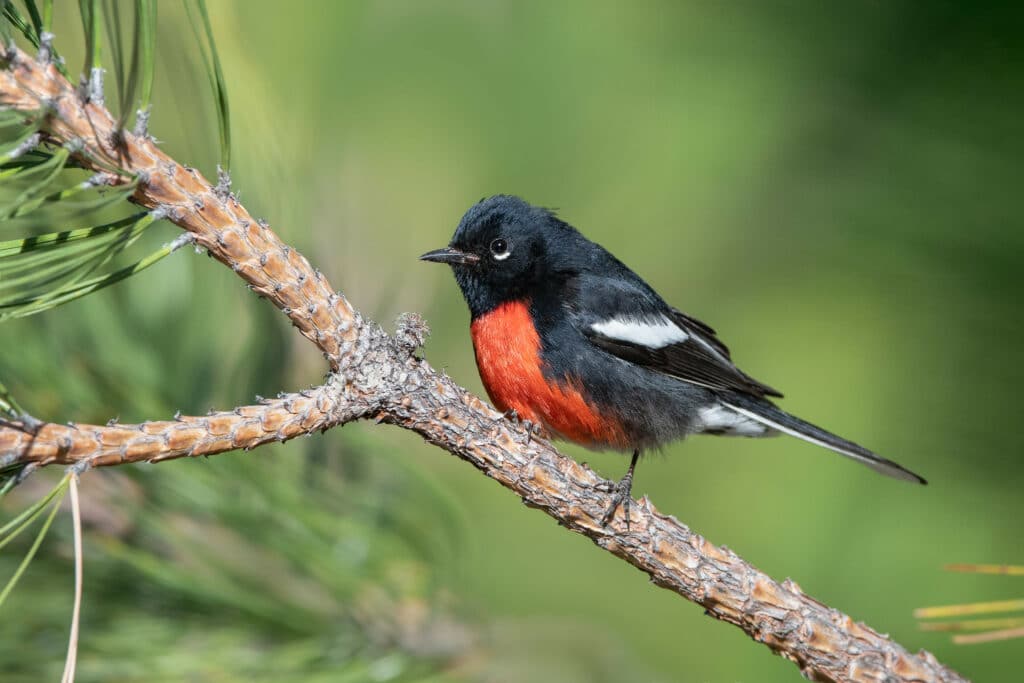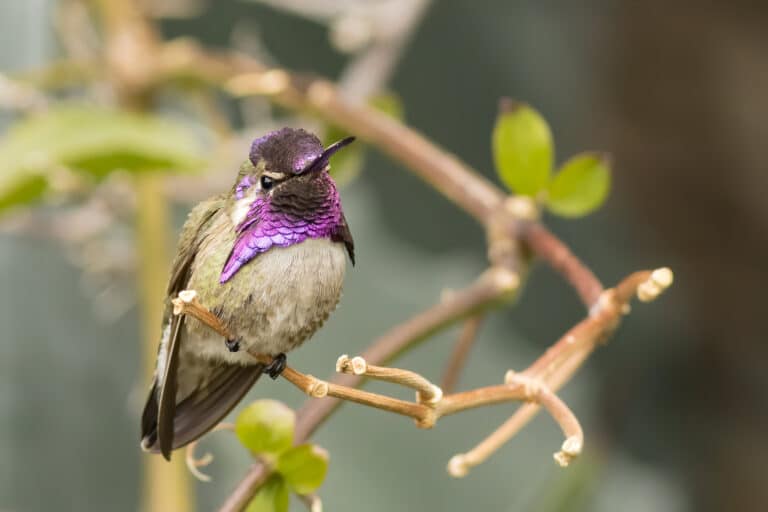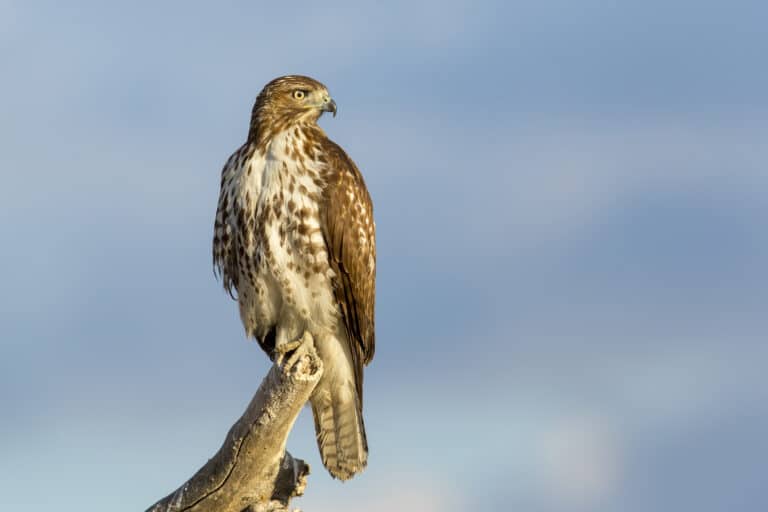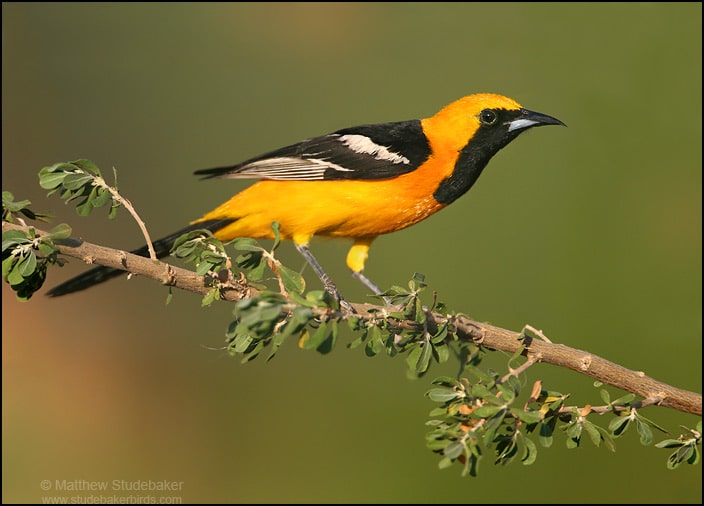The Painted Redstart holds a special place in my heart—it’s one of the first birds my young son actually “saw” in binoculars. We were taking a leisurely walk in South Fork of Chiricahuas fame when I spotted the bird low and close enough to try to get him on it. While I held the binoculars for him and tried to line them up from my awkward angle, he suddenly exclaimed, “whoa, look at that really red bird! It’s right there!” My job was done.
A fairly common inhabitant of pine-oak woodlands in the Sky Islands of the southwestern U.S. and Mexico, I’m still excited by seeing a Painted Redstart. Its jet black upper parts set off by the impossibly red under parts and bright white wing patch are a striking combo. Look closely at the white half eye ring, pretty cool! And this is not a bird to just check off and move on—the Painted Redstart is fun to watch as it creeps along trunks and branches while flashing its white wing patches and white outer tail feathers (video!). It’s thought that this foraging behavior makes it easier for the bird to spot prey as the white flashes spook insects into movement. It also gives this bird and the other members of the Myioborus genus the nickname “whitestart”—this name makes more sense especially given that these mostly tropical redstarts are not even particularly closely related to the American Redstart, a non-Myioborus species. Interestingly, the flashing behavior seems to be genetic as hand-raised nestlings begin fanning their not yet fully grown tails at two weeks old.
Look for Painted Redstarts now through summer at places like Bear Canyon and Rose Canyon Lake on Mt. Lemmon, Madera Canyon, and most canyons in the Huachucas and the Chiricahuas. They most often nest on the ground, so are frequently seen lower in the canopy, and unlike most wood warblers, males and females look similar and both sing. Also listen for their unique, un-warbler-like calls that are reminiscent of Pine Siskin flight calls.
Image by Matthew Studebaker




